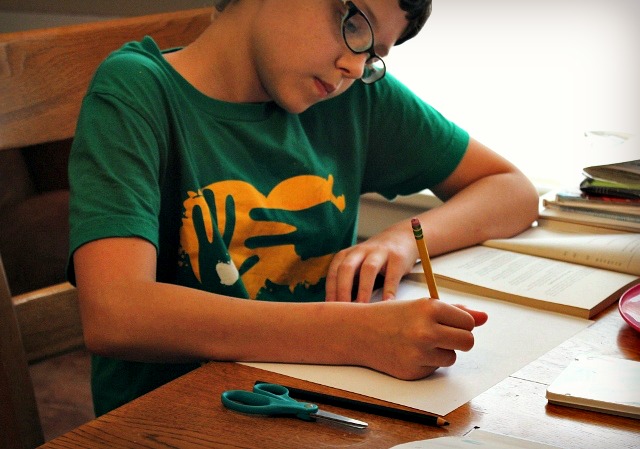If you were to describe the scope and sequence of a traditional curriculum in terms of how it relates to child development, I think we would see a large discrepancy between what is believed to be a generally broad age range for skills – and the narrow time in which it is taught.
In other words, studies in development show us that children gain skills and knowledge at a variety of different times. We know this about babies, but it seems to be forgotten once a child can walk and talk.
The way most educational facilities are set up, every child is expected to be “on target” with skills at a certain time frame. This just does not reflect our knowledge about growing and learning.
Developing At Different Rates
There are a few key concepts that are often forgotten by educators when it comes to children.
1. Each child is unique and will develop different sets of skills
Not every child will excel in every topic. Some children will have natural strengths in linguistics, math, art, music, etc. Each child will have weaknesses as well. Rather than trying to make every child fit a standard mold, we should encourage their strengths and help them build up their weaknesses.
2. Children will develop at different rates.
There is a wide age range that doctors consider “normal” for learning to walk. Why is there not a similar range for learning to read? There is, along with ranges for every other skill. An education that focused on the child, not on a set of skills, would acknowledge that.
3. Development does not happen on an even timeline.
Kids have mental growth spurts just like they have physical ones. In observing and talking with relaxed homeschoolers and unschoolers, it becomes apparent that there is an ebb and flow to the learning process.
Children who are allowed to learn at their own pace will go through times where they are actively seeking out knowledge, absorbing, and engaging. They will also have periods that seem stagnant, but usually, prove to be quite reflective.
The Benefits Of Teaching At Their Pace
If we are to move towards a more natural education for children, it would only make sense to teach at a pace that flows with their individual development.
As far as logistics are concerned, many classrooms and schools have accomplished this. If you look into the movements of Democratic Free, Montessori, and Sudbury schools you will see a model that allows for group education in a holistic setting.
Of course, some forms of homeschooling, as well as unschooling, also operate under the idea that it is better to let the child set the rate of learning skills.
There are some additional benefits to educating in this fashion:
- There is no need for the repetition of concepts until a child “gets” it – the child will be ready to receive the information.
- Less stress on the child and the educator.
- The information will be learned faster and easier.
- A more lifelike, natural flow to education with seasons of instruction and seasons of passivity.
- The encouragement of a love for learning, rather than feeling pressured.
- Easy acclimation into adulthood, as this is how learning happens outside the educational institution.
Even if you don’t agree with completely child-led methods of education, there is something to be said about paying attention to the development points of each individual child rather than what an arbitrary set of standards dictates they should know.
- The Importance of Developing a Sober Mind in Our Students - February 22, 2019
- Teaching Children At Natural Development Points - February 21, 2019
- Dealing With The Fears Of Unlimited Game and Media Time - January 20, 2019


